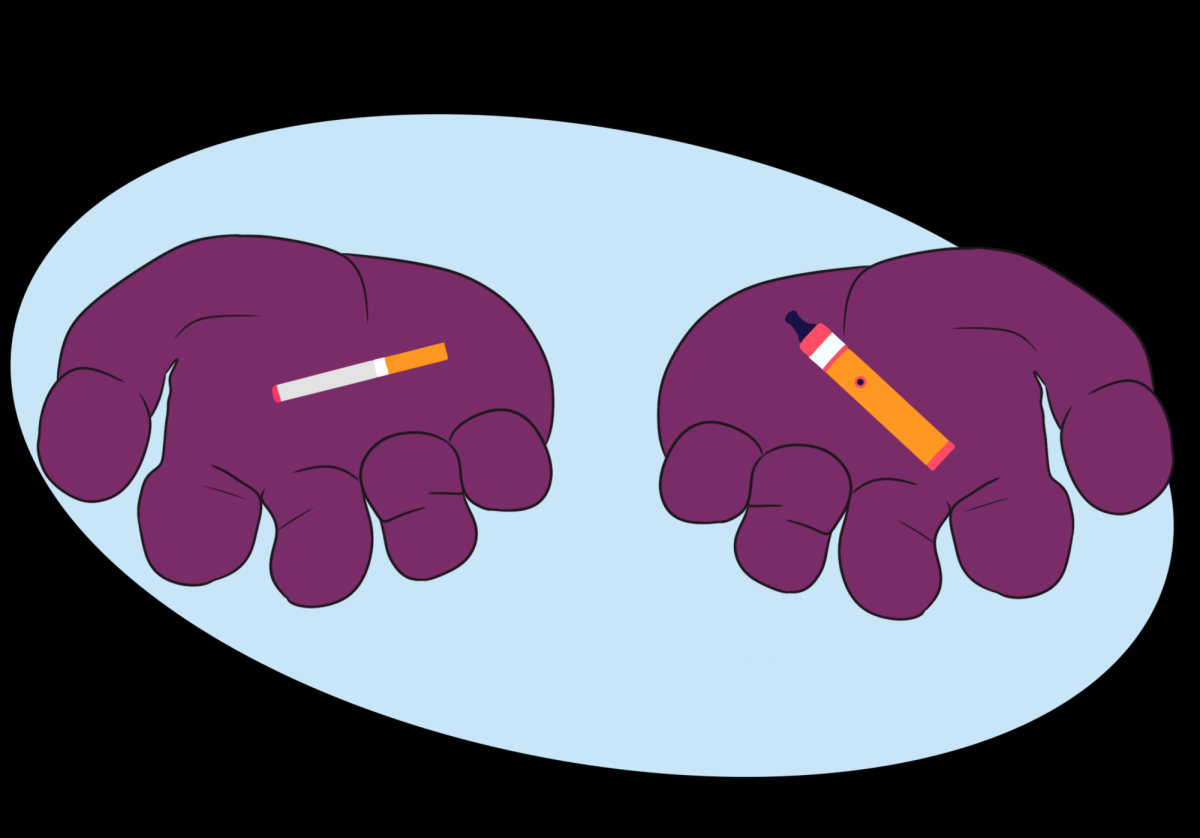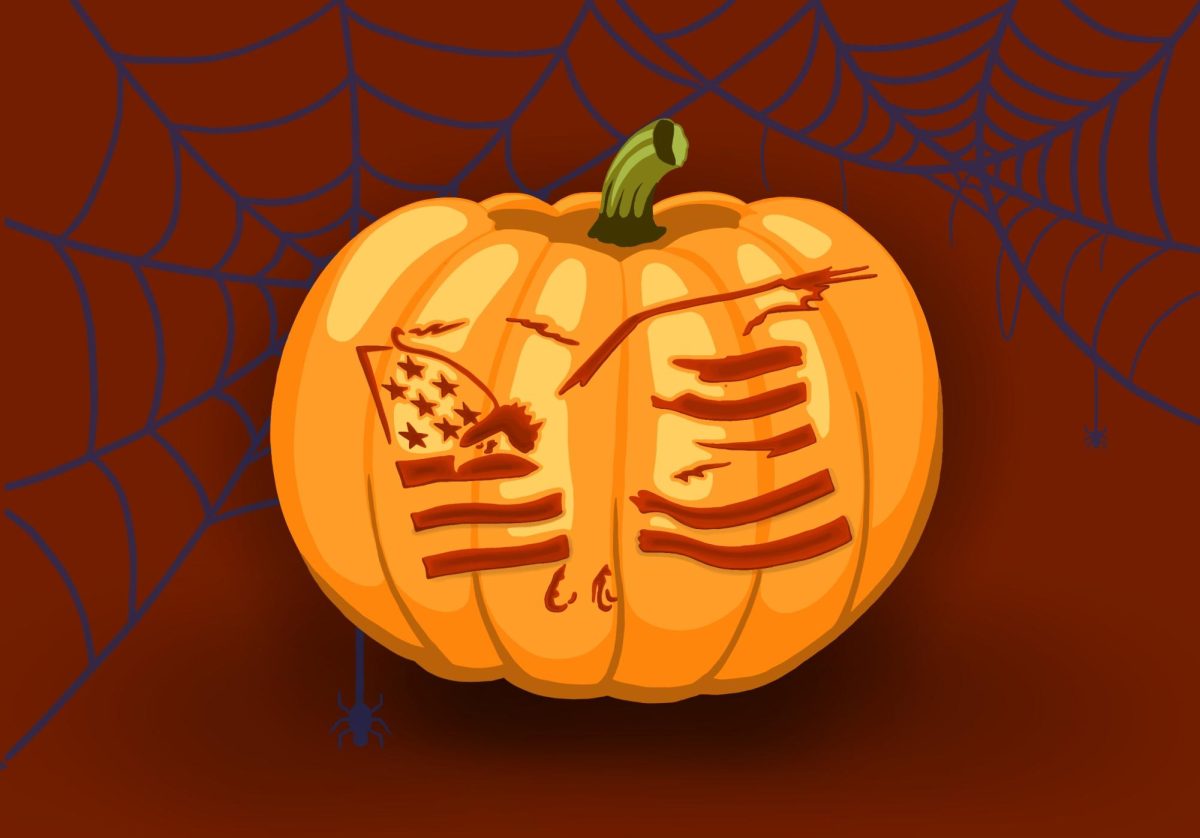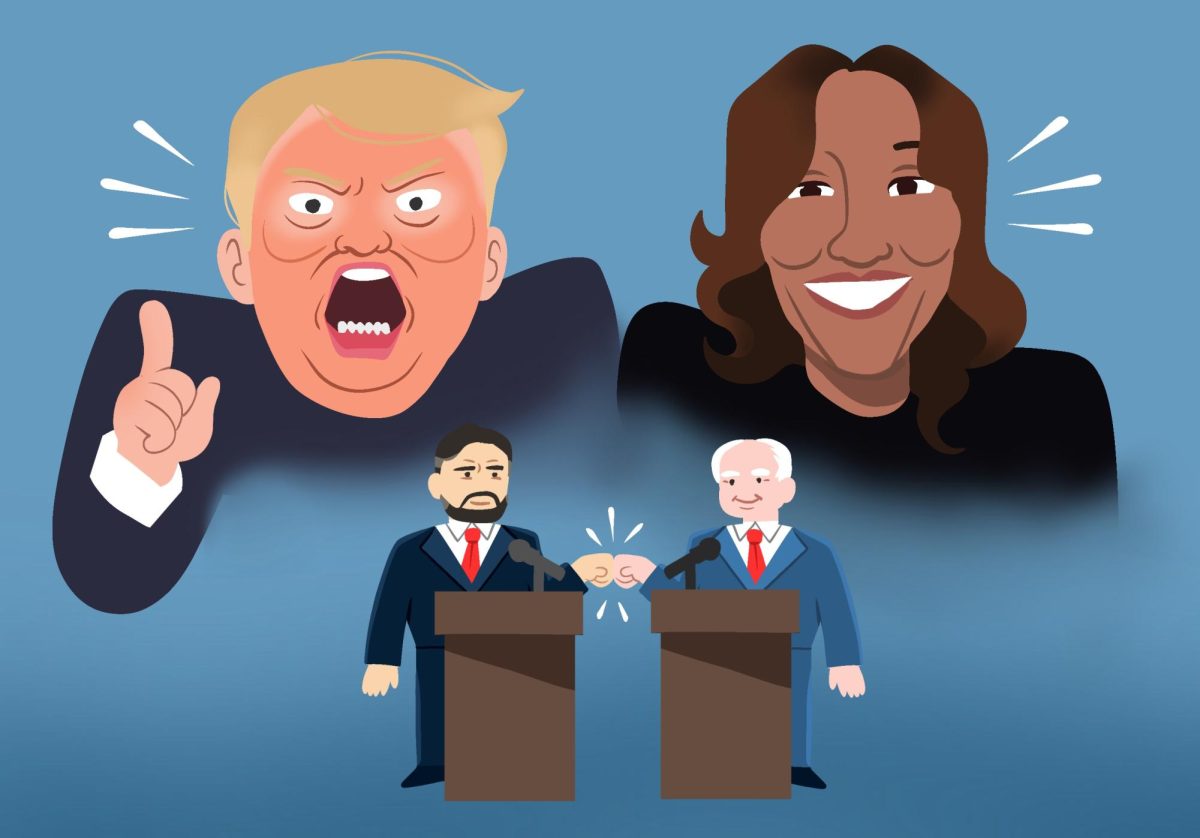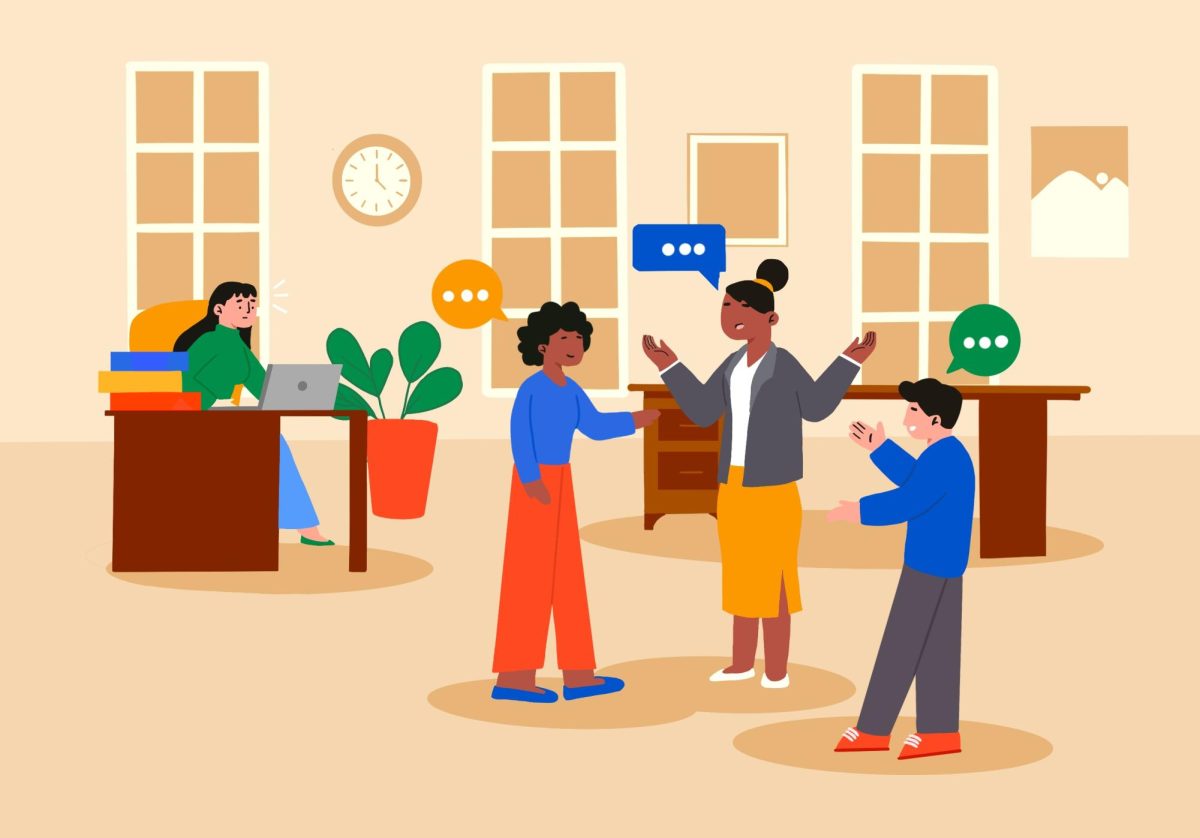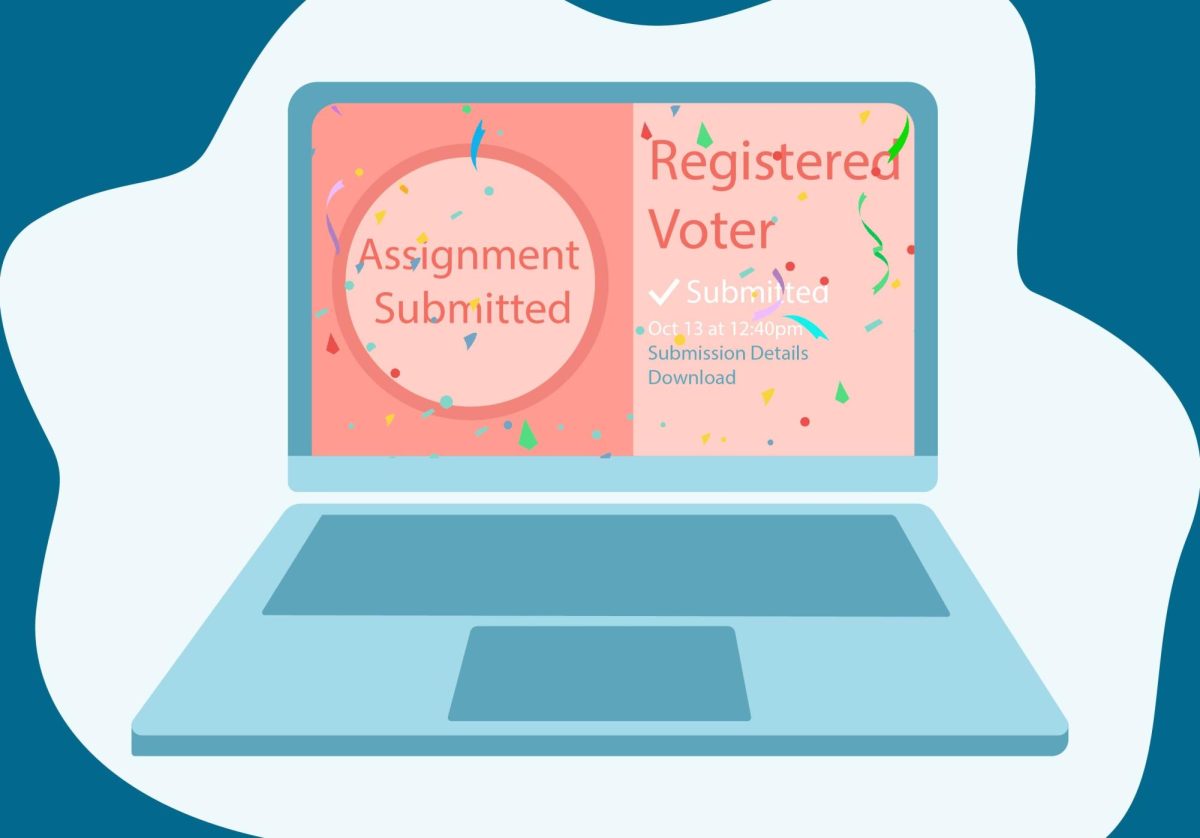Maintaining an addiction can be difficult, especially in unprecedented times. Wages are low and prices are high, even the price of getting high. Thankfully, the industry gives us some options.
The menagerie of nicotine products has diversified considerably in the past decade. Vapes were invented in the early 2000s and have since become rampant among young people because the product was indirectly marketed toward them.
When you’re a kid, it’s difficult to think of something more appealing than fruit-flavored steam that makes you dizzy. Where cigarettes failed for being too obvious, too old and too uncool, vapes picked up the slack. Now, the addictive chemical inside is the main export and tobacco companies have capitalized on it.
This wasn’t always the case.
Tobacco enjoys a long and illustrious history. The plant has been smoked for centuries for its stimulative properties, initially only through pipes. Cigarettes were introduced in the early 19th century, but their negative health effects were only discovered after decades of popularity.
Until that point, cigarette smoking had become a habit so ubiquitous that even high schools had designated smoking sections for students. Infrastructure all over the world adapted to accommodate smokers. It was an integral facet of American culture with campaigns and icons recognizable to this day. Your grandmother is probably nostalgic for the Marlboro Man or Camel’s camel.
After the revelation that constantly inhaling smoke might be bad for your lungs, robust anti-smoking campaigns brought the tobacco industry to its knees. U.S. Surgeon General Reports in the 1950s illuminated the noxious side effects of smoking, leading to an increased awareness of its dangers.
Following this, the government finally cracked down on tobacco. Congress passed the Federal Cigarette Labeling and Advertising Act in 1965, leading to the ominous surgeon general’s warning being plastered on every pack of cigs. All broadcast advertising for cigarettes was banned in 1971 — no more commercials where kids could see them. Many lawsuits over lung cancer deaths and shady marketing tactics were to come.
“The tobacco industry has lost major, major lawsuits and many, many dollars for suppressing information about addictiveness, and particularly targeting vulnerable people,” said Dr. David Jacobs, a Mayo professor of public health in the Division of Epidemiology & Community Health at the University of Minnesota. “For children, there were subtle ways to do it: that was a big part of the lawsuits they lost.”
The slough of negative attention was a massive blow to the tobacco industry’s reputation. Cigarette smoking continues to fall to this day, but the industry maintains a foothold in the American consciousness. So why hasn’t Big Tobacco died?
Enter e-cigarettes. Now commonly known as vapes, they were invented by Chinese pharmacist Hon Lik in 2003. They were conceived as a healthier alternative to smoking. The idea was, instead of inhaling toxic tar to get your nic fix, you could use a vaporizer to get the addictive chemical without the negative side effects — probably. The liquid solution could be used to wean oneself off nicotine and eventually stop consuming it entirely.
Naturally, tobacco industry innovators took notice. Since then, vapes have enjoyed a meteoric rise in popularity. They took hold of the youth, becoming the demographic’s most popular nicotine product by 2014. It wasn’t long before Juuls were ubiquitous in schools, hiding in plain sight with their thumb-drive-esque shape. Ironically, people who had never tasted nicotine before were now getting addicted to it off the product meant to curb addiction.
“Vaping is, in my mind, clever, innovative and evil,” Jacobs said. “Once you get addicted, it’s really hard to stop.”
A significant chunk of college students now vape — 22% reported vaping regularly in 2019. It has become an unbreakable habit for many, but keeping up that habit is difficult considering how prices have fluctuated. The average vape starts at $20 and only goes up in price. That’s an expense many students cannot spare, and as such, some have returned to an old tradition.
Cigarettes are miles more affordable to the average student in need of nicotine. At only $10.49 a pack on average in Minnesota, vapes are an exorbitant expense by comparison, so several students have made the switch.
These low-by-comparison prices exist despite special taxes intended to urge people not to purchase cigarettes.
“Taxation was intended, initially, as a policy mechanism, to price people out of the market,” Jacobs said.
Even with these strategies, the purportedly healthier alternative is more expensive. The emerging trend I see is vapes falling out of favor and cigarettes picking up their losses. Vapes are harder to afford, and cigarettes may be filling the demand they cannot meet.
That’s not to say tobacco companies are suffering big losses. Most tobacco companies now own entire vape retailers or hold significant shares of them. They have simply adapted to the market and diversified their offerings.
If their products were not so harmful, we could look at the industry’s triumph as an inspiring tale of resilience. Instead of being beaten down by lawsuits and anti-smoking campaigns, Big Tobacco pivoted, gobbled up its competitors and shaped itself into an even more insidious force than it ever was before. Against all odds, they kept up the cycle of addiction which now stretches far beyond traditional cigarettes.
Where I see the most chainsmoking college kids is outside of bars. Many students, myself included, have enjoyed “drunk cigs,” which are exactly what the name suggests. Something about consuming nicotine while also intoxicated by alcohol heightens the pleasurable effect, but there is a psychological aspect as well. A drink and a cigarette go together almost naturally.
“That is a really common behavior,” Jacobs said. “You can imagine people in social settings with alcohol also smoking cigarettes. So the behaviors are coupled and they reinforce each other in that way, sometimes for better, sometimes for worse.”
In any case, the tobacco industry maintains an iron grip on college students. At the end of the day, nicotine is an escape. It is a way to distance oneself from the stresses of daily life, which are heightened in these times. Simply giving up that escape can be difficult, so the best way to get over a nicotine addiction might be to switch to something healthier.
“I think that the solution is really providing alternate ways for altering consciousness slightly,” Jacobs said. “Alternate ways to get through days that may be difficult, may be joyful, whatever.”
What that might be is up to the individual to figure out. Just maybe avoid Zyns.


